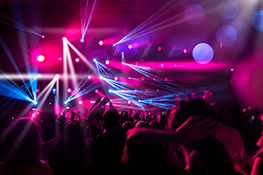Profile vs. Fresnel: Which Spotlight Suits Your Needs? A Detailed Comparison
Understanding the Fundamentals: Profile and Fresnel Spotlights
Choosing the right spotlight can significantly impact the success of your stage production. Two of the most commonly used spotlights are the Profile and the Fresnel. While both project light onto a stage, they achieve this in vastly different ways, resulting in distinct beam shapes and applications. This article delves into the key differences, helping you determine which spotlight best aligns with your specific needs.
Beam Shape and Control: A Key Differentiator
Sharply Defined Edges vs. Soft, Gradual Fade:
A Profile spotlight is characterized by its sharp, well-defined edges. This is due to its internal shutter system, allowing for precise shaping of the beam. Think of it as a precise scalpel for light, ideal for creating distinct gobos (templates that project images or patterns) and highlighting specific actors or areas on stage. The ability to control the beam’s edges with shutters, along with the iris for size adjustment, grants incredible precision and versatility.
In contrast, a Fresnel spotlight produces a soft-edged, gradually fading beam. The Fresnel lens, with its concentric circles, creates a smooth wash of light, perfect for illuminating larger areas or creating ambient mood lighting. Its lack of sharp edges makes it ideal for backlighting, creating depth and texture on the stage.
Lens System and Light Distribution: Exploring the Mechanics
The Profile’s Precise Optics:
Profile spotlights use a complex lens system, often including an ellipsoidal reflector. This setup allows for precise control over the beam’s shape, size, and intensity. The shutters and gobo slots further enhance this control, providing a high degree of flexibility for various creative lighting effects.
The Fresnel’s Simple, Efficient Design:
Fresnel spotlights employ a simple, single Fresnel lens. This lens is designed to focus the light, producing a wider, softer beam compared to a profile spotlight. The adjustable focus allows you to vary the beam’s size and intensity, but with less precision than a profile spotlight.
Applications and Ideal Scenarios: When to Choose Which
Profile Spotlight Applications:
- Precise Spotlighting: Highlighting specific actors or objects.
- Gobo Projection: Projecting images, patterns, or textures onto the stage.
- Creating Sharp, Defined Beams: Essential for creating impactful visual effects.
- Special Effects: Utilizing gobos and shutters for dramatic lighting designs.
Fresnel Spotlight Applications:
- Area Lighting: Illuminating larger areas of the stage.
- Ambient Lighting: Creating mood and atmosphere.
- Backlighting: Adding depth and dimension to the stage.
- Wash Lighting: Producing a smooth, even wash of light across the stage.
Power Consumption and Cost: A Practical Consideration
Generally, profile spotlights tend to be more expensive than Fresnel spotlights due to their more complex design and features. Similarly, their power consumption can also be slightly higher. However, the precise control and creative potential offered by a profile justify the increased cost for many lighting designers.
Conclusion: Making the Right Choice for Your Production
The choice between a Profile and a Fresnel spotlight ultimately depends on your specific needs and the nature of your production. Consider the desired beam shape, level of control, budget, and intended applications. If you require precise control and sharp edges, a Profile spotlight is the superior choice. For soft, even washes of light and ambient lighting, a Fresnel spotlight is more suitable. By understanding the strengths and weaknesses of each, you can confidently select the spotlight that will elevate your stage production to its full potential.


 Auditorium Construction Services
Auditorium Construction Services 